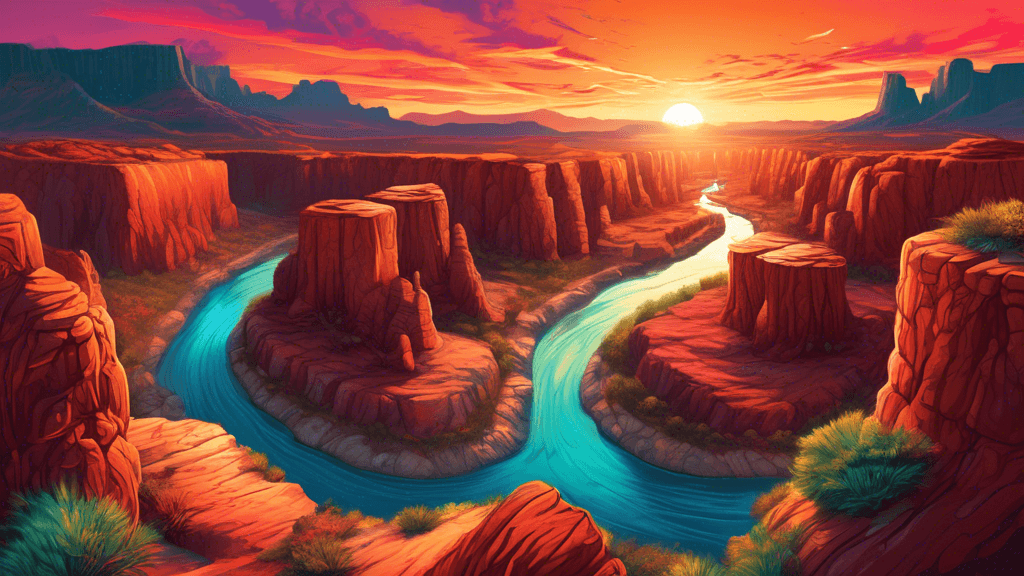
Exploring the Timeless Beauty of Rock Formations
Share
The Timeless Allure of Rock Formations
What is it about rock formations that captivate us so deeply? Is it their monumental presence or the stories they carry through the ages? From the weathered pinnacles of Bryce Canyon to the majestic basalt columns of Giant's Causeway, rock formations stand as natural archives, recording the Earth's evolutionary tale. This blog explores the beauty and scientific significance of these geological marvels and discusses why they deserve our utmost attention and conservation.
The Beauty and Science Behind Rock Formations
Rock formations are not just stunning landscapes; they are the result of millions of years of geological processes. Understanding these processes not only satisfies our curiosity but also enhances our appreciation for these natural wonders. Let us delve into the mechanisms that sculpt such breathtaking features.
Erosion and Weathering
Two primary natural forces that shape rock formations are erosion and weathering. Erosion occurs when natural agents like water, wind, and ice remove and transport rock particles. Weathering, on the other hand, involves the breaking down of rocks through chemical, physical, and biological changes. An exemplary illustration of these processes can be seen in the sandstone arches of Arches National Park in Utah. The unique arch formations have been carved out over thousands of years, with the removal of softer sediments leaving the harder rock to stand alone against the skyline.
Volcanic Activity
Volcanic activity can also give rise to iconic rock formations. The striking basalt columns of Giant's Causeway in Northern Ireland were formed through the rapid cooling of lava that erupted through the Earth's crust. As the lava cooled and contracted, it fractured into the polygonal shapes visible today. This formation provides not just a playground for geologists but also serves as a popular subject for photographers and nature enthusiasts alike.
Why Rock Formations Matter: Environmental and Cultural Significance
Rock formations are more than just aesthetically pleasing; they hold significant environmental and cultural value. They support diverse ecosystems and serve as landmarks for navigation and habitation throughout human history. Moreover, they are often considered sacred sites and play vital roles in the spiritual lives of indigenous communities.
Preserving Our Geological Heritage
Despite their resilience, rock formations are vulnerable to human activity. Unregulated tourism, climatic changes, and pollution pose serious threats to these ancient structures. Here lies the urgent need for conservation efforts which can be supported through several approaches:
- Educational Programs: Raising awareness about the importance of these formations and the natural processes that create them.
- Regulated Tourism: Implementing sustainable tourism practices to minimize environmental footprints.
- Legal Protection: Enforcing laws that protect against vandalism and exploitation of natural resources.
Conservation not only ensures the protection of these unique geological formations but also preserves the ecosystems and cultural histories they support.
Connecting with Our Planetary Past
Exploring rock formations provides a tangible connection to Earth’s ancient past. These structures are not merely rocks; they are the pages of Earth's deep geological history, shedding light on the planet's evolution and our place within it. As John Muir once aptly said, In every walk with Nature, one receives far more than he seeks. This is especially true when walking among these giants of stone.
As we advocate for the conservation and appreciation of these natural phenomena, let us not forget the intrinsic value they hold — beauty, knowledge, and a legacy of our world's dynamic character.
How Can We Contribute to Conservation?
To support the continuation of these wonders for future generations, your interaction with nature should always be respectful and informed. Participate in or donate to conservation initiatives, educate yourself about the natural environment, and spread the word about these incredible, monumental keepsakes of nature. Remember, every small step contributes to a greater journey in preserving our planet's geological history.
What will you do to help protect our planet’s natural artistry? Engage with nature mindfully and embrace the role of a conscientious global citizen. The beauty of our Earth deserves no less.





